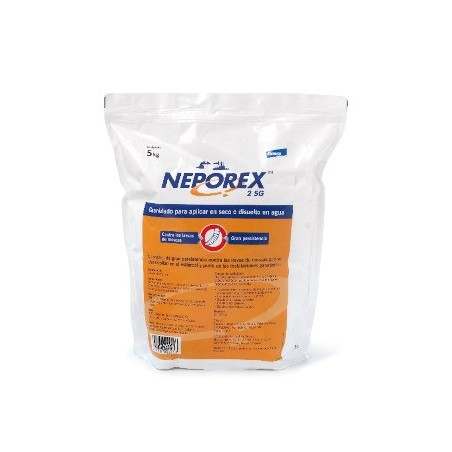Commented article
Evaluation of serology to measure the exposure of piglets to Ascaris suum during the nursery phase. Vanderkerckhove et al. 2017 Veterinary Parasitology 246, 82-87
Read the article summary
Comment

Deworming is a common practice and, generally speaking, it is carried out routinely in breeders and fattening pigs. It is normal to accept that as the sows have been dewormed (frequently before the farrowing), their piglets will not become infested during the first stages of growth: this is, during the nursery stage, basically because of two reasons:
- Because the sows don't shed eggs during the lactation stage, and therefore the piglets are weaned free of Ascaris.
- Because it's very difficult that a nursery building is contaminated and, therefore, that the piglets become infected when housed there. We must consider that 7 weeks are needed for the shedding of eggs in faeces after the infestation. It seems difficult that there's time for this in a stage that lasts 5-7 weeks.
Nevertheless, the possibility of the availability of a serologic test that allows the detection of antibodies against larval stages of A. suum, even when the infestations are mild, opens the possibility of considering dewormings in a different way with regard to the way we carry them out currently. It would be interesting to include this test routinely (once or twice a year) at the end of the nursery phase. In this way, we would know if there has been an early infestation. In such case we should check if the sows' deworming is correct by checking their infestation level, and to this end, maybe the recommended method would be the faecal egg count, possibly supported by serology, because the article shows a positive correlation between the optical density and the infective load. In case of seeing that the deworming in sows is correct, it would be necessary to administer the deworming treatment (generally given in the first phases of the fattening stage) earlier, in the nursery period. In this way, we would avoid the losses that the infestation could cause in this stage, as well as preventing the shedding of eggs in the early phases of the fattening stage that would contaminate the environment and favour future infestations.
I would like to end highlighting some data contained in the article that can be of great help when understanding this kind of infestation:
- Liver lesions due to Ascaris heal after 35 days of their occurrence, so their detection in the abattoir can underestimate the infestation level.
- Maternal immunity lasts until 7-8 weeks of age.
- Early infestations need more than 7 weeks before the piglets shed eggs in their faeces, so the diagnostic tests based on egg counts would not be advisable during the nursery stage.
Summary of the commented article
What are they studying? The objective of the study is to evaluate if serology can be used to measure if nursery pigs are exposed to Ascaris suum. How was it done? Serum samples from both laboratory challenge and natural exposure field samples were included. Two novel ELISA tests were used: one is based on the recognition of the haemoglobin protein purified from the pseudocoelomic fluid of adult A. suum, and the other on the water-soluble complete homogenate of 3rd stage lung larvae (L3 Lung). During the experimental infection, various doses (10 to 500 A. suum eggs per day) were given weekly to piglets from 4 to 10 weeks of age to mimic natural exposure in the nursery. Blood samples were collected weekly for serological testing. At the end of the experiment pigs were euthanised and worm counts and counts of milk spot lesions on the liver were carried out to determine if the pigs were infected. For the field study, 10 end-of-nursery serum samples were collected from 68 farms in Flanders to carry out a seroprevalence study using the most promising assay from the first experiment. What are the results? A dose-dependent seroconversion was detected with the L3 Lung ELISA starting from 4 weeks post-infection. The haemoglobin-based test was not able to detect seroconversion. After 7 weeks, at the end of the nursery phase, the L3 Lung ELISA showed a 99% specificity and a 90% sensitivity in the detection of exposure of piglets to A. suum, with a minimum infection level of 20 A. suum eggs per day. A seroprevalence study was performed, under field conditions, by sampling 10 piglets on 68 different nursery farms in Belgium. The results showed that in 38% of these farms all the piglets tested seronegative, whereas for the remaining 62% of the farms the percentage of seropositive piglets ranged from 10 to 100%. This indicates contamination of the nursery facilities with A. suum eggs. Importantly, the timing of serum collection for serological analysis should be carefully chosen, as the results have shown that maternally derived anti-Ascaris antibodies can persist in piglets until 3–4 weeks after weaning. Finally, considering that the sensitivity is only 40% for an infection dose of 10 eggs/day, one should be aware that low infection levels might not be detected with this tool. In conclusion, this study shows that serology can be used to measure the exposure of nursery piglets to A. suum, providing an additional tool in the control of this widespread parasite. What implications does this paper have? Ascaris ELISA serology allows to understand the nematode's infestation cycle. If the infestation starts during the post-weaning period, additional control measures to lower the exposure of the piglets to A. suum can be implemented during the nursery phase and therefore reduce its spreading to the fattening units. |







